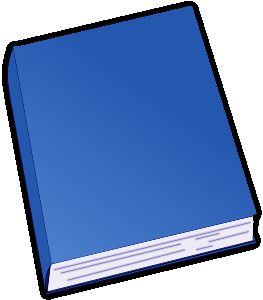The Sceptical Chymistor Chymico-Physical Doubts By: Robert Boyle (1627-1691) |
|---|

The book titled The Sceptical Chymistor Chymico-Physical Doubts was an intriguing and thought-provoking read. Authored by Robert Boyle, a renowned philosopher and scientist, this literary work delves deep into the realms of chemistry and philosophy.
Boyle's writing style is engaging, making complex scientific concepts accessible to readers of various backgrounds. From the very beginning, Boyle captures the reader's attention by posing thought-provoking questions and presenting skeptical doubts surrounding chymical and physical theories of the time.
What sets this book apart is Boyle's ability to blend scientific inquiry with philosophical musings. He masterfully dissects various theories, challenging the prevailing notions in the field of chymistry. His doubts are backed by thorough experimentation and carefully crafted arguments, making it impossible for readers not to question established beliefs.
One of the book's strengths lies in its systematic approach. Boyle organizes his doubts into seven categories, each addressing a different aspect of chymical and physical theories. This structure allows readers to follow the author's train of thought and grasp the depth of his skepticism.
Throughout the book, Boyle displays an impressive breadth of knowledge, referencing past researchers' work and incorporating their findings into his arguments. This extensive research lends credibility to his doubts and supports the credibility of his ideas.
Although the subject matter revolves around scientific concepts, Boyle ensures that the book remains accessible to a wider audience. He presents explanations in plain language and uses relatable examples to illustrate complex theories. This makes the book a valuable resource for both experts in the field and curious novices seeking a deeper understanding of chymistry's foundations.
Moreover, Boyle's writing is not limited to presenting doubts, but also offers potential solutions and alternative theories. He strives to provoke further discussion and encourages readers to think critically about the field, inspiring new avenues of research.
However, some readers may find the book's extensive scientific terminology overwhelming. Boyle assumes a certain level of familiarity with the subject matter, which might pose a challenge to those without a scientific background. Nevertheless, for readers willing to invest extra effort, the rewards are undoubtedly worth it.
In conclusion, The Sceptical Chymistor Chymico-Physical Doubts by Robert Boyle is an insightful and captivating read for anyone interested in the fascinating intersection of chemistry and philosophy. Boyle's skepticism, combined with his extensive research and astute arguments, make this book a cornerstone in the history of both disciplines. Whether a seasoned scientist or a curious intellectual, readers will find themselves engrossed in the captivating journey of doubt and discovery presented by Boyle's brilliant work. This e book was prepared from a facsimile of the 1661 first edition and contains spelling, capitalization, and punctuation inconsistencies typical of the era. These have been preserved as they appear in the original. Printer errors have also been preserved. Those mentioned in the Errata at the end of the book are noted with [Errata: corrected text]. Other obvious printer errors are noted with [Transcriber's Note: corrected text] where the meaning might be unclear without the correction. See also the printer's note preceding the Errata, which contains material omitted from the text (the place where it should be inserted is marked in the text with a Transcriber's Note). There are a number of sidenotes in this book, most of which function as footnotes (e.g., citations to other works) and some of which function as true sidenotes. For the sake of clarity, sidenotes functioning as footnotes have been converted to numbered footnotes, with number markers at appropriate places in the text. A character with a macron is represented by an equal sign. E.g., [=a] indicates "a" with macron. A table of contents has been provided for the reader's convenience. THE SCEPTICAL CHYMIST: OR CHYMICO PHYSICAL Doubts & Paradoxes, Touching the SPAGYRIST'S PRINCIPLES Commonly call'd HYPOSTATICAL, As they are wont to be Propos'd and Defended by the Generality of ALCHYMISTS... Continue reading book >>
|
| This book is in genre |
|---|
| Science |
| eBook links |
|---|
| Wikipedia – Robert Boyle |
| Wikipedia – The Sceptical Chymistor Chymico-Physical Doubts |
| eBook Downloads | |
|---|---|
|
ePUB eBook • iBooks for iPhone and iPad • Nook • Sony Reader |
Kindle eBook • Mobi file format for Kindle |
|
Read eBook • Load eBook in browser |
Text File eBook • Computers • Windows • Mac |
| Review this book |
|---|